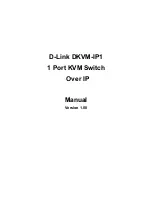
power source outlet. When the Switch receives power, the
Power LED illuminates solid green.
3.
Connect the other switch or computer to one port of the
gigabit Ethernet switch
using Category 3/4/5/5e/6
UTP/S
TP cabling.
4.
Connect another switch or computer to the other port of
gigabit Ethernet switch
by following the same process as
described in step 3 above.
Figure 8: End node or switch connection
Department/workgroup PoE+ switch
With 4 PoE+ in
-
line power interfaces, the ES3002
-4P-4T can
provide central power to an IP phone system, IP camera
system, and a wireless AP group for the enterprise. For
example, up to four cameras can be installed for surveillance
demands o
r up to four wireless APs can be utilized to build a
wireless roaming environment in the office. Without a power
socket limitation, the Switch makes the installation of cameras
or wireless APs easy and efficient.
Figure 9: Department/workgroup PoE+ switch connection
PoE powered devices
3~5 W
Voice over IP phones
Enterprise can install PoE
VoIP Phone
, ATA
and other Ethernet/non-Ethernet end-devices
in the central area
where UPS is installed for
an
uninterrupt
ible
power
and control
system.
6~12 W
Wireless LAN Access Points
Museum
s, airports, hotels, scenic places,
c
ampus
es,
f
actories,
and warehouse
s can
install access points.
8~25 W
IP Surveillance
Enterprises, m
useum
s, c
ampus
es, hospitals,
and banks
can install IP
cameras
without
restrictions on installation location as
electricians are not
required
to install AC
sockets.
3~12 W
PoE Splitter
A
PoE Splitter is used to
split the PoE
52
V
DC over the Ethernet cable into
5/12
VDC power output.
It
frees the device deploy
ment
from
restrictions due to power outlet locations,
which eliminat
e
the costs for additional AC
wiring and reduces installation time.
Power over Ethernet (PoE)
overview
What is PoE?
PoE technology comprises of a system that safely transmits
both power and data on an Ethernet UTP cable. The IEEE
standard for PoE technology requires a Cat5 or higher cable
for high power PoE levels, but can operate with a Cat3 cable
for low power levels. Power is supplied in common mode over
two or more of the differential pairs
of wires found in the
Ethernet cables and comes from a power supply within a PoE
-
enabled network device such as an Ethernet switch, or can be
injected into a cable run with a mid
-
span power supply.
The original IEEE 802.3af
-
2003 PoE standard provides up t
o
15.4 W of DC power (minimum 44 VDC and 350 mA) to each
device. Only 12.95 W is assured to be available at the powered
device as some power is dissipated in the cable.
The updated IEEE 802.3at
-
2009 PoE standard, also known as
PoE+ or PoE plus, provides up to 25.5 W of power. The 2009
standard prohibits a powered device from using all four pairs
for power. The 802.3af/802.3at defines two types of source
equipment: mid
-span and end-span.
Mid-span
A mid-
span device is placed between a legacy switch and the
p
owered device. Mid
-
span taps the unused wire pairs 4/5 and
7/8 to carry power; the other four are for data transmission.
End-span
An end-
span device is directly connected to the powered
device. End-
span can also tap the 1/2 and 3/6 wire pairs.
P/N 1073337-EN
• REV
A
• ISS
19JUL17
5 / 8


























